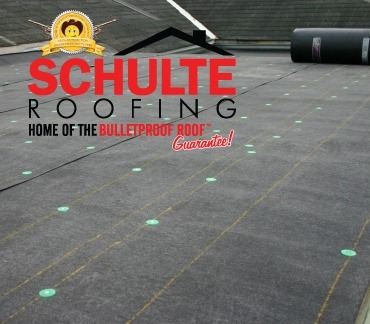 In the past, Houston commercial roofing contractors gave little significance to roofing structure. They didn’t mind its impact to the environment, business and comfort of the people using the building and thought that everything was fine as long as the roof served its primary purpose. Research and rigorous studies regarding the effect of the type of roofing materials on the environment as well as cost led to roofing manufacturers developing a material that is environmentally friendly, exhibits better performance, durability, energy-saving, water-proofing, and increased building-user’s comfort. With the latest applied technological innovation Ethylene Propylene Diene Monomer (EPDM) rubber was developed.
In the past, Houston commercial roofing contractors gave little significance to roofing structure. They didn’t mind its impact to the environment, business and comfort of the people using the building and thought that everything was fine as long as the roof served its primary purpose. Research and rigorous studies regarding the effect of the type of roofing materials on the environment as well as cost led to roofing manufacturers developing a material that is environmentally friendly, exhibits better performance, durability, energy-saving, water-proofing, and increased building-user’s comfort. With the latest applied technological innovation Ethylene Propylene Diene Monomer (EPDM) rubber was developed.
EPDM – Rubberized Roofing System
Ethylene Propylene Diene Monomer (EPDM) is a synthetic rubber that is used for a variety of applications and one of these is for low-slope commercial roofing. This synthetic rubber is a very effective single-ply membrane that can be applied to replace new Houston commercial roofing. This single-ply membrane has been used in the United States since the 1960’s to prevent leaks. EPDM rubber is easy to install when compared to Built-Up Roofs or BUR. Traditional built-up roofs emit foul odors and fumes but EPDM is odorless.
Studies show that EPDM can defy abrupt changes in temperature (thermal shock). The temperature tolerance ranges from -62 degrees Fahrenheit to 300 degrees Fahrenheit which is very important in resisting potential physical damage. When applied to industrial roofing, it displays high tensile strength (TS), high elasticity level, and high compatibility to other roofing materials used to prevent heat penetration and other weather conditions. On the other hand, the ultimate function of EPDM is for waterproofing.
Benefits of EPDM
EPDM has delivered excellent performance and has demonstrated multiple benefits to building owners.
- Relatively inexpensive
- Low labor cost
- Easy to install
- Weather resistant
- Durable (thermal shock)
- Abrasion resistant
- High Flexibility
- Hail Resistant
- Fatigue resistant
- Fire resistant
Energy Star Roofing Material
In terms of energy savings, building owners will be surprised that EPDM has high energy performance as compared to other conventional ‘cool-roofs’. The study of the Department of Energy (DOE) along with the EPDM roofing association resulted in a positive outcome. The result shows that EPDM rubber can save as much energy as reflective coatings. In fact, some places in the United States such as Florida and California use this type of synthetic rubber because it can lower energy consumption.
Methods of Installation
There are three methods used when applying EPDM to a low-slope roof.
- Full Adhesion EPDM – This utilizes water-based or solvent-based adhesive to mount the material on the substrate.
- Mechanically Fastened EPDM – The material is attached on the substrate using mechanical methodology as prescribed by manufacturers.
- Ballasted EPDM (loose-laid system) – Rocks or cement pavers are laid to hold the material in place.
Ethylene Propylene Diene Monomer (EPDM) is widely used because of the benefits it provides. One of its major benefits is to prevent pollution of rainwater run-off which can be recycled and utilized for personal sanitary purposes. This rubberized roofing was thought to last 15 to 30 years if properly installed; however, service life depends on how the roofing material is being maintained. EPDM is widely used in Houston commercial roofing because of its practicality. Presently, concern for environmental sustainability and long-term performance makes EPDM a primary choice!
